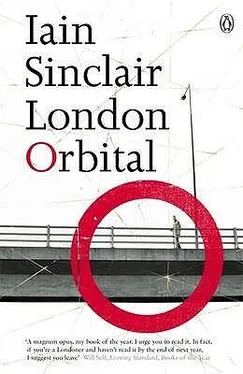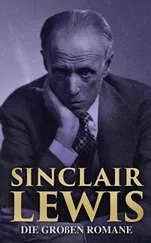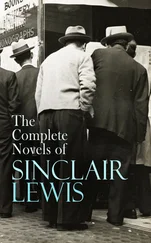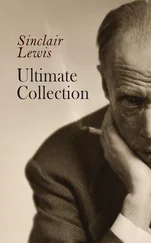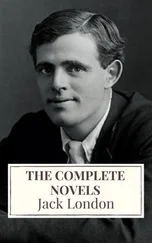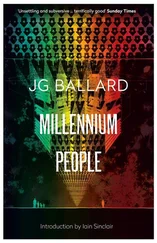Rachel Lichtenstein, author of Rodinsky’s Room , was dragged here to choose a wedding dress. She lived in Hackney, her mother in Southend: Bluewater was the obvious rendezvous. Twenty minutes on the malls and the ceremony was about to be called off, while Rachel fled to a house of study in the desert. A life of abstinence and prayer. Bluewater’s anodyne aquarium walkways provoke many such dramas. The Kenneth Baker anthology of uplifting poems, in relief on every wall, incubates rage. I was ready to tear out the tablets with my fingernails and smash them down on the heads of inoffensive mall-grazers.
A Tate Modern gallery of male underwear fails to satisfy Petit; a mournful shrug and he’s away through the revolving doors. It’s a great cultural event, melancholy as Wim Wenders, watching Petit work a retail outlet. Shopper as aesthete. He tracks, he drifts; he won’t stoop to examine a label or a price tag. The nostrils flare. The stern eyebrows twitch. Some hideous vulgarity, in terms of colour or texture, has been enacted. Behind the mask of disdain, this man is supremely alert, sunk into a trance of mesmeric concentration. Indifference as the ultimate accolade. Bluewater fails, Bluewater must be consigned — like some wretched film or novel — to silence, scorn: the heartrending sigh of a seeker who has reached out and grasped disappointment. A spoonful of volcanic dust. Petit quits the quarry like a vampire hunter promised wolves and fly-eating maniacs, then fobbed off with a drip of born-again vegans.
The displays of underwear, boots, lipstick — kit — have a disembodied sexuality. Palace of consumer fetishism as art gallery isn’t a perverse reading. The ‘Dalí Universe’ at London’s decommissioned County Hall is conducting a phone poll (call: 0901 151 0133) to decide on the best site for a ‘sculpture based on a Dalí painting’. Should Profile of Time be exhibited at Hampton Court Palace, in Kensington Gardens, the Royal Botanical Gardens at Kew — or at Bluewater? No contest. Bluewater, the posthumous dream of Walter Benjamin, is the clear favourite. The Dalí painting from which the sculpture has been concocted was first shown in 1931. Title? The Persistence of Memory .
The payback for my trip to Bluewater is Petit’s company on our attempt to cross the Thames (22 October 1999). Research has made it abundantly clear: the Queen Elizabeth II Bridge cannot be negotiated on foot. Neither can we rush the Dartford Tunnel (like desperate asylum seekers from the Calais camp). The best option is a long detour, by river path, to Gravesend. A ferry trip. A slog from Tilbury to Grays (returning us to the bridge and the reborn M25).
Marc fails to make the seven a.m. meeting at London Bridge station. He’s been here before, walks recorded in his book Liquid City (Isle of Grain to Teddington). The novelty has worn off, feet have healed; he discriminates, picks outings worthy of his talent. That’s very reasonable, the images have been logged. Greenhithe, Ingress Park (its Capability Brown plantings handed over to Crest Nicholson), Northfleet, Gravesend: they are part of an earlier narrative. I won’t peddle an exhausted tale. Better to pick up where the motorway surges into Essex.
The problem is that video-time and shoot-from-the-hip photo-time are not compatible. Renchi and I have learnt to register detail as we walk; a steady and unspectacular progress. Breakfast, pub lunch, chats with folk met at the wayside. Nothing to break the trance. Video is trance. Once Petit’s finger starts to stroke the touch-screen, he’s gone. He’s inside the image.
Temple Hill throws up seductive views of river, motorway, suspension bridge: Petit might take an hour to find the right spot from which to film. Renchi can’t rein himself in. Look, look: blue and white POLICE tape in a field, Costa del Sol bungalows with new silver motors too big for the driveway. The Italianate tower of another captured hospital, WELCOME TO THAMESLINK PARK, ARCHERY HOUSE. Temple Hill is an entire landscape of ‘Archery’, brash and dissimulating. Loud with inaccurate précis, revised biography. Petit loves it, he scowls and he shoots. Renchi, anguished, frantic to be on the move, smiles. Walking and filming won’t work. That’s why Petit spends so much time on the road. You can’t go wrong; one hand rests lightly on the wheel, the other on the button of the Sony DV. Radio On . Bruce Gilbert mixes on cassette, news flashes from the radio. Out in the weather, stuck on the marshes in a steady downpour, the film-essayist surfers. He wants a narrative that can be reduced to a list. A shooting script.
1. On a ridge above the Dartford Crossing: the Sakis Hotel. A venue favoured by migrant US evangelists, operated by slot-machines. SUNDAY BRUNCH £ 16.95. 3 COURSE CARVERY & JAZZ BAND. EAT AS MUCH AS YOU CAN!
2. CROSSWAYS. Giant letters in a retail park. A plantation of pylons.
3. Approved industrial architecture: a windowless box. On an epic scale. The coming, off-highway aesthetic: neutrality. Absence of signature, ASDA BACKS BRITISH BEEF.
4. AMBIENT GOODS INWARD. Dead roads where container-transporters park. Limbo zones of rubbish in short grass, improvised culinary and sexual transactions.
5. Ingress Abbey as devastated mud, a building site.
6. Graffito on riverside wall: THATCHER OUT!
7. The cranes and hoists of Northfleet under a heavy sky. Petit eating a banana. A snail hanging from a spear of wet grass. A snail on Renchi’s shoe.
8. One hoarding: PELICAN FABRICATIONS, SEACON TERMINALS LIMITED, BRITANNIA REFINED METALS LIMITED, LONDON COACHES, FLAT-OUT KARTING, THAMES TIMBER.
9. The locked stadium of Dartford and Northfleet FC.
10. A Northfleet café with an expressionist mural: industry returned to life in a smoky (yellow/red) apocalypse. The mural as a window on an alternative world.
11. A wall of figs in a Gravesend industrial estate.
12. A chalk quarry (caged walk) not yet converted into another Bluewater. Renchi suffers from mild, Petit from severe, attacks of vertigo.
13. Riverside houses with Belgian roofs, Corinthian capitals (inverted foliations), arched windows, ogee mouldings. Fallen into disrepair.
14. A fibre-optic colony. Guarded by a lighthouse topped with concrete water tank.
15. Graffito on tile wall: EAT THE ESTABLISHMENT.
16. A microphone, on a tripod, set up on a traffic island.
17. A chaplet of sunflowers woven into a chainlink fence. WARNING GUARD DOGS ON PATROL. KEEP OUT.
18. Memorial tablet to Pocahontas (in bell-shaped hat).
19. The Gravesend-Tilbury Ferry: Princess Pocahontas .
We’re out, at last, on the grey Thames, at the mouth of the estuary. The voyage towards Essex feels like a mistake. The small craft has to push against the tide. Sky and river merge. Our walk through Surrey and Kent dissolves. We are returned to the familiar shabby narratives of Tilbury (dockside, fort, World’s End pub). To piebald horses roaming a Dutch landscape of irrigation ditches and rifle ranges.
As the light goes, Petit falls further and further behind; he is trying to make a video-record of salient dereliction (high dock walls, weed-strewn railway tracks, hangdog lamp-standards). We tramp towards Grays. There’s no river path, we have to stick with the Dock Approach Road. Tower blocks wink across rough heath. Steady traffic. Everything is visible and nothing is revealed. There must have been a reason once for Grays, but it’s been forgotten. Subdued, we wait for the Fenchurch Street train.
Blood & Oil Carfax to Waltham Abbey
Film-essayist Patrick Keiller, who knows about such things, says that Grays once had a wonderful cinema, on a par with the Kilburn State. Now the State of Kilburn can sneer at its riverside rival: Grays is beyond resuscitation. A body bag lined with asbestos.
Читать дальше
